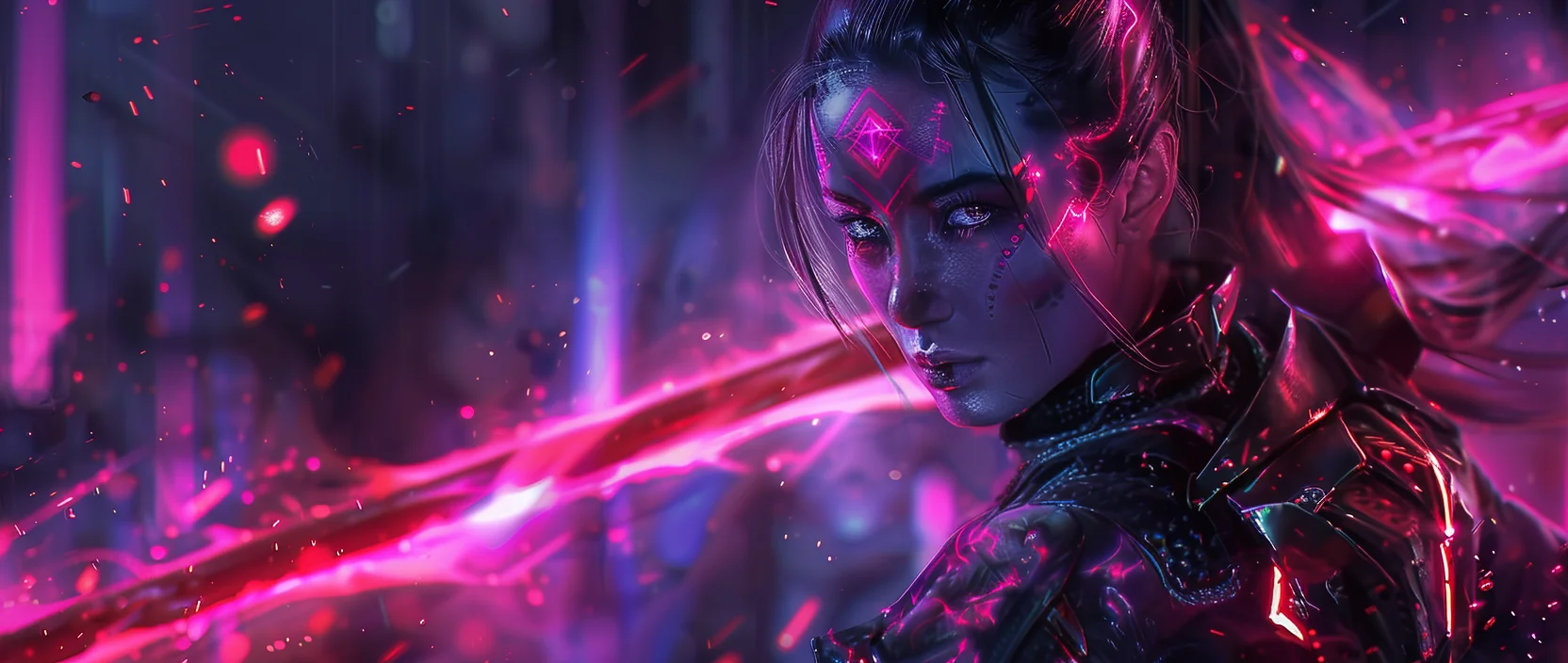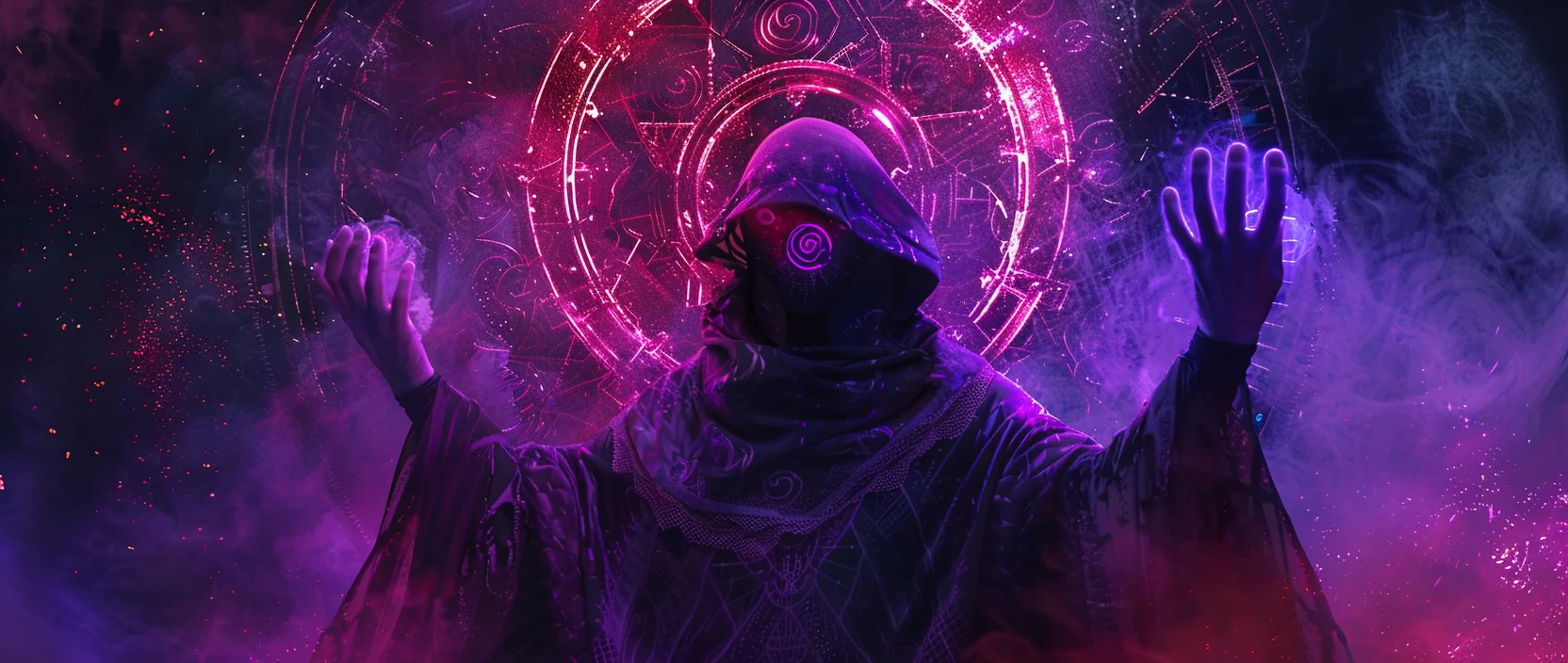The Galaxy of Lemuria is a large-scale MMORPG blending fantasy and sci-fi, built on a robust Web3 infrastructure. The game combines anime-inspired aesthetics, card-based combat mechanics, resource gathering, planetary exploration, and a fully-fledged economy powered by NFTs and blockchain technology. Developed by Lemuria Online SpA, the project leverages Polygon and Immutable X networks to ensure scalable, low-cost transactions, while granting players full ownership of in-game assets.
Table of Contents
- Gameplay and Core Mechanics of The Galaxy of Lemuria
- Blockchain Architecture and Tokenomics
- NFT Ecosystem and Asset Ownership
- Character Classes and Progression
- Game Economy and P2E Mechanics
- Technology and Cross-Platform Play
- Community and Roadmap
- Conclusion

1. Gameplay and Core Mechanics of The Galaxy of Lemuria
The world of Lemuria features procedurally generated planets, each with unique biomes, climates, and resources. Players begin by customizing a character and completing introductory quests before venturing into open exploration, resource collection, crafting, and combat.
The card-based battle system lets players build decks using abilities, spells, and skills. Cards consume mana and are influenced by character attributes such as strength, agility, intelligence, and stamina, adding a layer of strategic depth to each encounter.
Space exploration is another key aspect: players can operate starships to transport goods, escort other players, participate in expeditions, and engage in space battles. Ships can be upgraded and rented, becoming valuable NFT assets.
2. Blockchain Architecture and Tokenomics
The game operates on Polygon with upcoming Immutable X integration, providing low-cost, scalable Web3 infrastructure. This enables asset storage and transfer through NFTs and allows marketplace trading.
Key Tokenomics Elements:
- In-game token – used for crafting, upgrades, and purchases.
- Founders Tokens – grant early access, rare item rights, and special roles.
- Asset renting – players can lease heroes and ships for profit sharing.
- Planets as NFTs – unique, upgradable, and tradable planetary assets.
Integration with Polygon and Immutable X enables The Galaxy of Lemuria to achieve scalability, low-cost transactions, and a fully functional Web3 economy. Its utility token and NFT assets are used for purchases, crafting, rentals, and governance. The game’s tokenomics is designed for long-term sustainability through limited supply, burn mechanisms, and planned staking features. Token holders gain access to in-game functions, events, and voting rights, fostering deeper engagement and economic incentives for players.
3. NFT Ecosystem and Asset Ownership
Almost everything in Lemuria can be tokenized as NFTs — characters, ships, equipment, pets, lands, and battle cards. These NFTs vary in rarity and can be freely traded on marketplaces like OpenSea. Booster packs offer collectible cards with at least one rare card guaranteed.
Players with Founders NFTs receive exclusive event access, airdrops, and cosmetic upgrades. Upcoming features will allow NFT assets to affect seasonal rewards, crafting systems, and in-game visual styles, creating a strong tie between collectibles and utility.
4. Character Classes and Progression
The game features eight base classes at launch, each offering distinct battle styles and abilities. Character growth is based on combat, quests, crafting, and exploration. Core attributes like strength, dexterity, intelligence, and stamina can be improved over time.
- Assassin: Fast and lethal, with critical hits and stealth tactics.
- Barbarian: Strong melee fighter with high endurance and brute force.
- Mage: Long-range spellcaster with powerful magic but fragile defenses.
- Monk: Balanced warrior with combat stances and agility.
- Necromancer: Summons minions and curses foes with dark magic.
- Ranger: Precision shooter with traps and long-range attacks.
- Mystic: Supportive caster with healing and protective abilities.
- Warrior: Defensive tank, ideal for front-line damage absorption.
A rebirth mechanic allows players to reset progress for permanent bonuses, enhancing long-term growth. Professions such as engineering, alchemy, and blacksmithing further customize progression paths and contribute to the player-driven economy.

5. Game Economy and P2E Mechanics
Lemuria utilizes a robust Play-to-Earn economy designed to reward both active players and strategic investors. The system is free-to-play up to level 20, allowing new users to explore the game without financial commitment. Once beyond this point, players can engage in various activities to earn and trade in-game tokens and NFTs.
Key Mechanics and Descriptions:
| Mechanic | Description |
|---|---|
| Free Access | Explore the game freely until level 20, ideal for onboarding new players. |
| Daily Quests | Complete missions for token rewards and valuable in-game materials. |
| PvP & Guild Raids | Participate in competitive events to win rare loot and seasonal bonuses. |
| NFT Rentals | Lease ships, characters, and planets for passive profit sharing. |
| Player Marketplace | Trade NFTs and items freely, allowing organic price formation and speculation. |
| Upgrades and Crafting | Use tokens and materials to enhance gear and assets, creating recurring demand. |
This structure ensures a sustainable and engaging economy by combining earning potential with player-driven supply and demand. The dual approach—rewarding both gameplay skill and strategic asset management—makes Lemuria’s ecosystem dynamic and inclusive.
6. Technology and Cross-Platform Play
Developed in Unity, Lemuria supports Windows, macOS, Android, and browser access. Procedural generation ensures each planet is unique and replayable, while cross-chain mechanics simplify wallet and NFT integration.
Immutable X enables gas-free, fast transactions, vital for large-scale PvP and trading. The tech stack also sets the foundation for future DeFi integration, staking, and scalable social gameplay.
7. Community and Roadmap
The community is active across Discord, Telegram, and X (Twitter). Developers maintain transparency through the “Spacefarer’s Report,” covering updates, features, and partnerships.
Upcoming features include a guild system, revamped UI, NFT reward seasons, and large-scale PvP tournaments. Cross-game interactions and social missions are also in development.
The partnership with Immutable X has expanded technical capacity and Web3 visibility, helping attract a wider player base and ensure long-term viability.
8. Conclusion
The Galaxy of Lemuria is a standout Web3 MMORPG blending sci-fi exploration, card battles, and real asset ownership. Its multi-chain infrastructure, deep lore, and community-driven design position it as a flagship project in blockchain gaming.
With strong tokenomics, NFT integration, and player influence over the world, Lemuria offers a future-forward vision of gaming where entertainment and economic agency go hand-in-hand. For players seeking immersive gameplay and ownership, it’s one of the most promising GameFi universes to watch.





